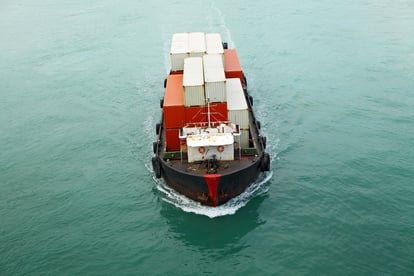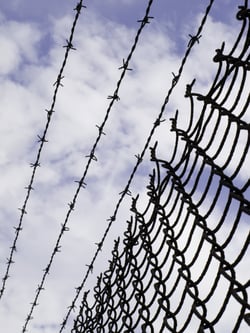There has been a ton of talk about trade, taxes, tariffs, and trade wars lately. It's not a terribly fun topic, but it's one that directly affects our customers and how they do their business. For this article, we'll talk about some of the issues some best practices that can help you get your products at the right time with the appropriate tax applied.
The Myth of Free Trade
 Much of the focus of attention around trade lately has been around some of the positions that the United States has taken with respect to bi-lateral and multi-lateral trade as well as trade that is governed by membership in organizations like the WTO. However, anyone who has tried to do any type of global commerce will tell you that moving anything across international borders has always been hard. While some of the global trade policies of the last few decades have made things easier, much of this was just "windows dressing" that masked the obstacles that were still lurking beneath the surface.
Much of the focus of attention around trade lately has been around some of the positions that the United States has taken with respect to bi-lateral and multi-lateral trade as well as trade that is governed by membership in organizations like the WTO. However, anyone who has tried to do any type of global commerce will tell you that moving anything across international borders has always been hard. While some of the global trade policies of the last few decades have made things easier, much of this was just "windows dressing" that masked the obstacles that were still lurking beneath the surface.
What do I mean by this? For starters, the big elephant in the room and the one that has garnered the most attention of late is the concept of a trade tariff. What is a trade tariff, you may ask? Well, the term is defined as a tax or duty to be paid on a particular class of imports or exports. That's a bit simplistic for what has actually been happening for a long time. We need to look at the why? behind these taxes.
Let's say your country makes a-m-a-z-i-n-g cheese. Truly exceptional. But, to make this truly exceptional product, it costs a lot. Whether it's the best milk, finely cultured rennet, or the painstaking work of a craftsman in making working the process to perfection. Now, let's say another country makes pretty good cheese. Not anything close to what you can get domestically, but good enough for most people on a daily basis. This starts to get imported into your country and, people may actually start to buy more of this import than the domestic version. This hurts the business of the domestic cheesemaker because they are selling less cheese. When they sell less cheese, that means they need less milk and less people to service the business.
So, what are the cheesemakers to do? Simplistically, they have two choices. Their first choice would be lower their prices to match that of the imported cheese. This would hurt their margins and, potentially, make them unprofitable. Most wouldn't choose this option of given the choice. So, what's choice number two? Ask their government for help! If the governing body that manages trade and commerce sees the side of the cheesemakers, they can choose to impose a special tax on these cheese imports. They see the benefits of this as being twofold in that it makes their local products more competitive and it brings in more taxes to fund projects.
Now we get to the why of the tariff. It's not just a tax on imports or exports. It's a tax that, in general, is meant to make goods or services of one country more (or less) desirable or competitive versus that of the domestic market or, in some cases, that of those that have aligning interests. This is why I called this section "the myth of free trade" since, even though goods and services may flow freely across borders, there are forces that are at play that make it, well, no-so-free.
The Challenges of Trade
 As with our cheese example, there are lots of products that different countries have put significant barriers around as the would move around the world. Whether it's to protect a nascent industry or to break into another, these mechanisms have been used time and time again to choose winners and losers. In manufacturing and, more specifically, high tech manufacturing, the changes have been pronounced.
As with our cheese example, there are lots of products that different countries have put significant barriers around as the would move around the world. Whether it's to protect a nascent industry or to break into another, these mechanisms have been used time and time again to choose winners and losers. In manufacturing and, more specifically, high tech manufacturing, the changes have been pronounced.
Over the last 20-30 years, manufacturing has migrated from developed economies into developing economies. The reason have been varied, but they almost always revolved around labor costs. What's happened, however, is that these developing economies have now become much more developed and have, in some cases, surpassed the capabilities of the developed economies that used to be the powerhouses of manufacturing. Now, much of the manufacturing supply chain relies heavily on these global sources of capabilities and have integrated around them. No where else is this more evident than in China.
China has been known as a supplier of inexpensive (some say cheap) goods for a long time. However, as global trade blossomed over the last few decades, China has also become a source for advanced manufacturing as well. These capabilities mixed with very lenient trade policies have made "right sourcing" the supply chain much simpler and cost effective. With the rumblings from the US around potentially punitive tariffs, there is significant potential for upheaval in global supply chains. This is creating a lot of consternation in our industry, but there are ways to deal with this.
How to Manage Trade Uncertainty
In a way, much of the current situation was foreseeable. Historically, globalism and nationalism have ebbed and flowed over generations, so this isn't something completely new. What is new is the level of interconnectedness that we have today that is accompanied by significant systemic risk due to unseen counter-party risk mixed with geo-political uncertainties. There are some ways to manage this, however.
We'll list a few areas to be aware of so that you can keep your products flowing to your customers. This list will be from tactical to strategic in order.
1. Know Your Codes
Do you know the proper HS/HTS codes for your products? These are the legal trade designations for goods that are assessed by national customs authorities. HS (Harmonized System) codes are 6-digit codes used for 98% of global trade. Similarly, HTS (Harmonized Tariff System - also known as HTS-US) codes are a superset of these that are specific to the US and have more granular designations through the addition of an additional 4 digits.
Correctly coding these will go a long way towards keeping your goods flowing across borders and getting the correct tax treatment. Sometimes the taxation of specific types of products can be greatly impacted by the selection of the sub-codes. Also, using an incorrect code can cause delays in clearance and, in rare cases, confiscation and destruction of your shipment. If you're not sure of the proper code for your products, you can find additional information at the ITC (for the US) and this handy Excel Spreadsheet from the World Bank (for the rest of the world).
2. Know Your Country of Origin
Did you know that where your product was made may not actually be the country of origin? There are a few different interpretations of this, but the most common is where the "last major transformation" of a product occurred. This (generally) means that it has had a change of customs coding, has had some value added in the interim, and whether or not any special processing was done at intermediary steps. The nature of the global supply chain has made pinning down country of origin a bit more tricky.
The best way to know this information is to work closely with your CM or EMS company to make sure you know where parts are sourced from and where the "transformations" are taking place. Knowing this information and tailoring the process locations can have a significant impact on the tax bills long-term, so this one can be strategic as well.
3. Know Your Options
Capabilities know no national borders. Generally, there are lots of places where a specified bit of work can be done. The main differences will be capacity and cost. For electronics, there are lots of steps that can be done just about anywhere. China has one of the most developed supply chains for electronics manufacturing, but there are other options as well for doing assembly (as an example).
The main point here is that a conversation with your EMS or CM is in order to understand what type of geographic distribution of suppliers they have. You should ask if they have sourcing arrangement with other countries other than their home country. It's also important from a supply chain security perspective so that, as you grow, you're not too dependent on any one area. Sometimes it can cost a bit more, but supply chain diversity can pay dividends in the long run. Not only can this help optimize your tax bill, it can also de-risk some of your supply chain.
NexPCB Can Help!
NexPCB has customers in countries all around the world and we have significant experience in dealing with the challenges of global trade. We have hundreds of suppliers and can help you to select the right mix of quality, price, and right-sourced production capacity to meet any of your needs. You can contact us or get a quote directly! Our team of experienced electrical, mechanical, and production engineers along with our outstanding supply chain and logistics teams are ready to help with your production needs.
Posted by Chris Howes

Having had a long career at IBM, Chris joined NexPCB to bring pragmatic solutions to companies that are starting a new hardware adventure. Chris was also a maker before there was even such a term.
